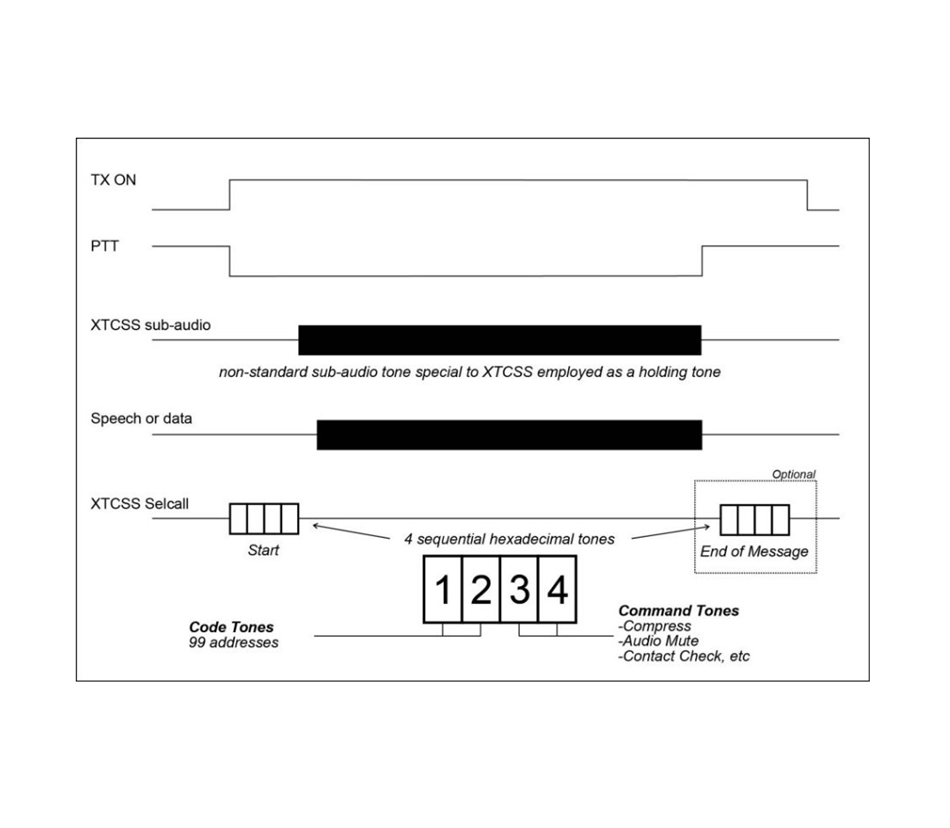Digital/Analogue Two-Way Radio Products
CMX882 – Baseband Processor IC with GPS Data Signalling for FRS, MURS, PMR446 and GMRS ‘Leisure Radios’
CMX882, a full-function half-duplex audio and signalling baseband processor IC for FRS and PMR446 type facilities -for both complex and simple end-designs.
Under the control of the host µC, all voiceband requirements are catered for: Voiceband and sub-audio filtering, pre/de-emphasis, compression and expansion, and audio routing and global level-setting with single or two-point modulation in the transmit path.
The combination of new and standard signalling functions in this product offer, under software control, increased functionality, versatility and privacy.
Standard Extended-Code CTCSS and DCS functions are integrated with the new XTCSS code implementation.
XTCSS provides more and better squelch-centred privacy codes with the added advantage of ‘silent operation’; no annoying interference from other sub-audio users. XTCSS fitted radios enjoy more privacy and flexibility of operation.
For advanced and enhanced radio operation the CMX882 embodies a 1200/2400 bps freeformat and formatable packet data FFSK/MSK modem (compatible with NMEA 0183) for Global Positioning by Satellite (GPS) operations.
The CTCSS configuration of this product enables:
- Tone Cloning
- All Call Code
- All Codes Monitor
- XTCSS Signalling
Devices are available through our Distributor Network.
Features
- Automatic Signal Scanning; IRQ on Detection of Valid Rx Signals
- XTCSS Channel and Data Signalling
- Tone Generation for Caller Recognition Tunes
- Low Power Operation with Graduated Powersave
- Programmable Signal Detection Thresholds
- Aux ADC Available to Monitor Inputs
- Quiet-Operation using XTCSS
- Selectable Voice Companding
- Voice Processing Facilities:
– Tx and Rx Path Gain Setting
– Voiceband and Sub-Audio Filtering
– Programmable Soft Limiter - ‘C-BUS’ Serial Host Interface
- Tx Interface for Single or Two-Point Modulation
- Enhanced CTCSS and DCS (23/24-bit) Codecs
- All-Code and Monitor-Mode for CTCSS
- Half-Duplex 1200/2400 bps FFSK/MSK Modem
- Selectable Data Scrambling
- Robust Automatic Packet Data Protocol with:
– Error Correction and Detection
– Interleaving and Data Scrambling/Privacy
Applications
- FRS, MURS, PMR446 and GMRS ‘Leisure’ Radios
- FRS Text Messaging
Power Supply Requirement
- 2.7 to 5.5 V
Downloads
Design Resources
CMX882 Pseudo Code Implementation
The CMX882 is a sophisticated modem + baseband processor targeted at “family radio” applications (e.g. FRS/GMRS/MURS/PMR446 radios). It is particularly well suited to family radios that include facilities for text messaging and GPS location data exchange. The purpose of this application note is to illustrate how the CMX882 can be configured for a feature-rich “family radio” product.
HSC and XTCSS Coding for Radio and Paging Systems
The Hexadecimal Sequential Code (HSC) is a coding format for sequential tone signalling systems. HSC permits address codes, instruction codes and data blocks to be exchanged on an unrestricted basis between all units in a network, thus providing the key to the design of fully integrated base/mobile/personal communications schemes. HSC is also compatible with the frequencies and protocols used for international '5-tone' selective call (SelCall).

